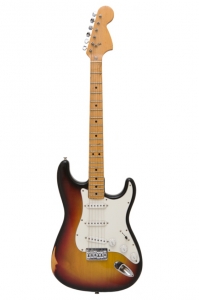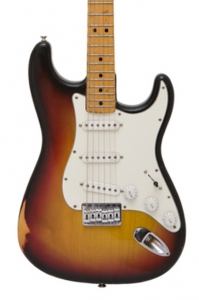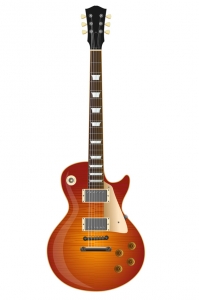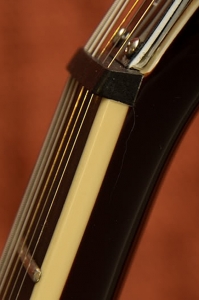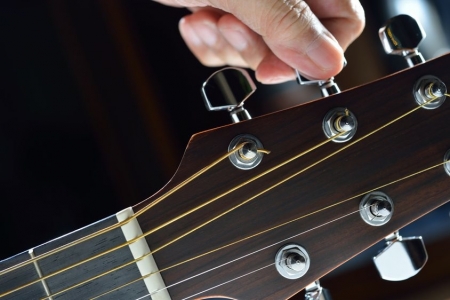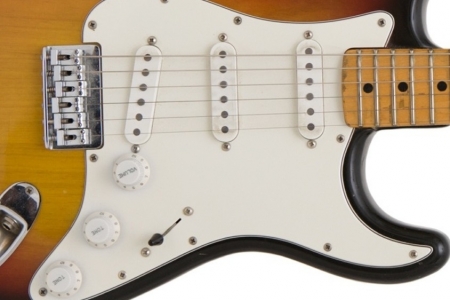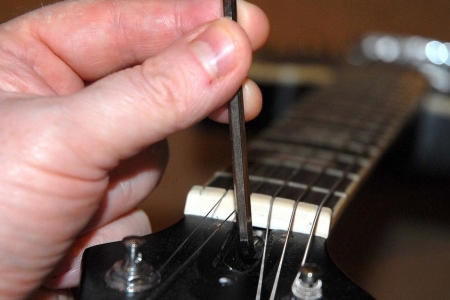 Have you been given a guitar by a friend or relative? Did someone get you a guitar as a birthday present? Do you already own a guitar or are you interested in any tips for buying a used guitar? If you answered yes to any of these questions then this article is for you.
Have you been given a guitar by a friend or relative? Did someone get you a guitar as a birthday present? Do you already own a guitar or are you interested in any tips for buying a used guitar? If you answered yes to any of these questions then this article is for you.
“Did I get a good guitar?” is a question that most guitarist have asked at one time or another. It can sometimes be an intimidating experience, from not being sure of exactly what you might need, what you think you should have paid, or the history of the guitar and how it was cared for. This article will give you a method for determining possible problems with any guitar.
The Different Types Of Electric Guitars
You might go into this situation with musical goals in mind. What style of music are you most interested in? Blues, Rock, Country, Reggae, or Surf music? A Stratocaster-style” or telecaster-style guitar with single-coil (single magnet) pickups would probably best suit the snappy, jangling sound you are looking for.
Harder Blues/Rock, Heavy Metal, Thrash, or Punk stuff? Look for guitars with humbucker (double magnet) pickups that can deliver a heavier output for those styles. Jazz? I would again recommend humbucker pickups that can produce the warmer tones that are necessary for a good jazz sound. Or are you looking for a guitar that can cover many styles? I have an electric guitar that has two humbucker pickups and a single-coil pickup, and it sounds great for every style I play!
Weight and Balance
Stand up with it. Is it too heavy or too light? You should feel comfortable with it when you are standing up and playing it.
Check out the lower body of the guitar and the back of the guitar for belt buckle scratches. A new guitar would have a perfect finish on the wood, but look carefully for tiny cracks or dents in the finish, because it is a safe bet the previous owner has not been one hundred percent careful with it. A few years back I bought a used guitar for country music-and it looked like it spent five years in a punk band!
Lightly shake the guitar. Do you hear any rattling inside the body that sounds like it shouldn’t be moving around?
Examining the neck is crucial for buying a used guitar. Does the neck feel comfortable in your fretting hand? Look at the length of the neck to make sure it is totally straight and not warped in any way.
Now examine the area where the nut meets the wood of the headstock. Do you see any cracks (large or small) anywhere in that area? If so, I would highly recommend moving on to another guitar. My repairman showed me some tiny cracks on both sides of the neck of a guitar I was looking at that indicated the fretboard was slowly tearing away from the neck. Any large oval-shaped cracks or lines on the back just below the headstock? It’s probably a cracked neck. Once again, don’t take a chance – move on.
Hardware
Check the string saddles to make sure they don’t make any noise when strings vibrate. Look for any signs of rust on all parts of the bridge. If you are considering a guitar with a locking tremelo system, make sure the fine tuners on the tremelo bridge haven’t been over-twisted by the previous owner. Headaches can certainly ensue if these tuners strip out.
Move north to the tuning pegs. Turn them both ways to make sure they turn smoothly and no wobbling occurs. During tuning you might hear a slight “clink” as you turn a tuning peg on a guitar. This sound means the string is getting caught in the groove on the nut. Unlike cracks near the headstock, this is not the kiss of death and can easily remedied by having a repair person file the groove in the nut to remove the obstruction.
Electronics and Fret Noise
Everything looks and feels good? Find a amplifier and plug it in! Turn both the volume and tone knobs all the way up. Listen to the full chords that you play. Everything should sound clear with no distortion or muddy sounds. Twist the volume and tone knobs to make sure you hear no crackling noises. Make sure the input jack is not loose or has anything rattling around inside it.
Now play individual notes on all strings on every fret from the top to the bottom of the neck. Are all notes ringing clear and not dying out right after you play them? If some notes are dying out, once again, this is not a deal killer – a simple adjustment of the truss rod in the neck can usually take care of the problem.
Finally, one of the most important tips after buying a used guitar is to always, ALWAYS get it set up by a good repair person. They will make sure the guitar is properly adjusted to the set of strings that you like to use, as well as setting the string height that you want on the neck. If you are just starting out, you can just let your repair person know that, and they will set up the guitar for a beginner.
Hopefully these tips will help you to make an informed decision when looking at a used electric guitar or checking out your current guitar for problems. If you have any specific questions about your instrument just ask your teacher or you can leave comments below.





